ABOUT THE AUTHOR
Stephen C. Stone was born and raised in Pittsburgh, Pennsylvania. He studied at Oberlin College (B.A., music and chemistry), Cornell University (M.S. and Ph.D., physical chemistry), and the Peabody Conservatory (M.M. and D.M.A., music composition). His numerous commissions have ranged from pieces for solo guitar to works for full orchestra, and his compositions have been performed internationally. He previously taught music theory at Towson University. He currently teaches music theory at the Peabody Conservatory and is the former director of the music program at Johns Hopkins Krieger School of Arts and Sciences.
Music Theory and Composition
Published by Rowman & Littlefield
A wholly owned subsidiary of The Rowman & Littlefield Publishing Group, Inc.
4501 Forbes Boulevard, Suite 200, Lanham, Maryland 20706
www.rowman.com
Unit A, Whitacre Mews, 26-34 Stannary Street, London SE11 4AB
Copyright 2019 by Rowman & Littlefield
All rights reserved. No part of this book may be reproduced in any form or by any electronic or mechanical means, including information storage and retrieval systems, without written permission from the publisher, except by a reviewer who may quote passages in a review.
British Library Cataloguing in Publication Information Available
Library of Congress Cataloging-in-Publication Data
Name: Stone, Stephen C., 1969, author.
Title: Music theory and composition : a practical approach / Stephen C. Stone.
Description: Lanham : Rowman & Littlefield, [2018] | Includes index.
Identifiers: LCCN 2017034990 (print) | LCCN 2017035148 (ebook) | ISBN 9781538101247 (electronic) | ISBN 9781538101223 (hardcover : alk. paper) | ISBN 9781538101230 (pbk. : alk. paper)
Subjects: LCSH: Composition (Music) | Music theory. | Popular musicWriting and publishing.
Classification: LCC MT6.S7868 (ebook) | LCC MT6.S7868 M87 2018 (print) | DDC 781dc23
LC record available at https://lccn.loc.gov/2017034990
 The paper used in this publication meets the minimum requirements of American National Standard for Information SciencesPermanence of Paper for Printed Library Materials, ANSI/NISO Z39.48-1992.
The paper used in this publication meets the minimum requirements of American National Standard for Information SciencesPermanence of Paper for Printed Library Materials, ANSI/NISO Z39.48-1992.
Printed in the United States of America
PREFACE
THE BASIC PREMISE OF THIS BOOK
This book started from the same place that, I suspect, every music theory book begins: theory so often comes across as a set of rules, ones that seem irrelevant to the students own performance or composition. When I was an undergraduate, music theory began with harmony, and the explanation for voice leading was, Composers have avoided parallel fifths, so you should too.
In the years between my undergraduate and graduate programs, I worked my way through, among other books, J. Frederick Bridges Counterpoint, which I found at a public library book sale. Although my goal was to practice and improve my composition, I was struck by something else: in doing the species counterpoint exercises, the rules of harmony and voice leading now made sense. Topics such as the role of perfect consonances or the instability of second-inversion chords had a context and reason. What had been missing in my earlier studies was the why. Counterpoint provided it.
I was not alone in this epiphany. About a decade later, theory textbooks began to incorporate counterpoint. First, appendices appeared. Now many textbooks include a chapter before moving into harmony. In talking with grad students, I heard about numerous undergraduate curricula that focused on species counterpoint for the first semester and then harmony for the second. When I asked them what textbook they used, they always replied either, We used two different ones, or We used handouts from my professor for the species.
This book contains counterpoint and harmony together, both thoroughly covered. It begins with the most basic building block of a musical work, the melody, works through species counterpoint exercises, and then transitions into harmony. It provides a continuity in which the various elements build logically and in which later harmonic details can be fleshed out with their contrapuntal underpinning. As one of my students said, Once you master the counterpoint, the harmony pops right out!
In this way, I hope that students can appreciate both the big picture and the details of common-practice music theory. I have not managed to remove all rules from the textbook. Every time I stipulate a theoretical restriction, however, I give an explanation for how it fits into the larger aesthetic ideal of the composers. It is not a rule because that is what composers did; rather, it is a guideline because there are a few stylistic ideals, and it reinforces these ideals by doing this.
BUT THERES A HUGE POP SECTION
Although this book was first intended to serve as a text for classical music theory classes, approximately a fifth of it is on pop songs. I originally included the occasional pop example, like many authors do. Students may better understand a concept if they tie it to a piece of music they know well. Many of them have played Hoagy Carmichaels Heart and Soul as a duet, so why not use it to illustrate the submediants role connecting tonic to pre-dominant?
I have reservations with this approach though. Courses called Music Theory generally mean Classical Music Theory. When we use a pop example to illustrate classical theory, we are saying, Here is a song that happens to follow classical norms. What we leave unsaid is that there are millions of pop songs that do not follow these conventions. Pop has its own, different set of stylistic traits. I remember sitting in my dorm room years ago, playing a pop song on the guitar, thinking, He wrote a retrogression. He didnt know what he was doing. When I started teaching, students would say, But the progression sounds fine; I dont know why you are saying its wrong. Without an understanding that we are talking about a particular genre of music, the generalizations are meaningless, and we return to theory as a set of pointless rules.
I see two possible ways that simultaneously presenting multiple genres plays out. First is what usually happens. A textbook includes popular music examples, but teaches common-practice harmony and voice leading. I find this disingenuous, as well as patronizing to pop music. The other option is to give equal time to both genres, in which case the text will read, A seventh will resolve down, but may not. You should avoid parallel fifths, but you dont have to. Pre-dominants lead to dominants, unless the dominant leads to the pre-dominant.
I agree that music programs need to be more inclusive, and I appreciate that many students are not versed in classical music. I decided to include an appendix on popular song. By separating it from classical music, it would clarify that conventions change with the genre. Through comparison and contrast, it would reinforce the general traits of each idiom. The appendix grew until I realized that I was treating pop the same way other authors were treating species. Why dedicate just a chapter to the subject? Go all the way.
The pop section now contains thirteen chapters. It assumes that the student has read the material on common-practice music since it presents pop through comparison with classical. It addresses harmonic function since that is the main focus of this textbook. I suspect that students will read these chapters on their own, but professors can also incorporate these chapters into their curriculum. Chapters 44 and 48 provide pop examples of common-practice functions. The section as a whole could serve as a final unit to a core undergraduate curriculum. Or with explanations about phrase structure, form, and lyrics, plus a few supplemental journal articles, this book could serve as the text for an upper-level elective on pop.


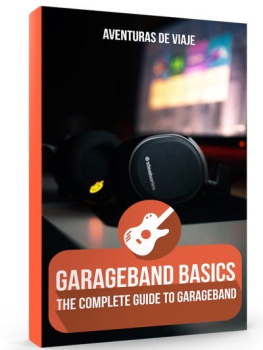
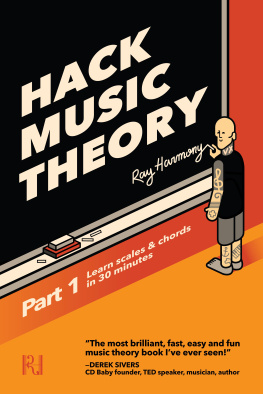
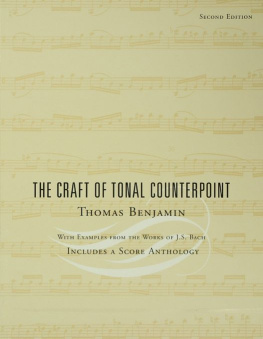
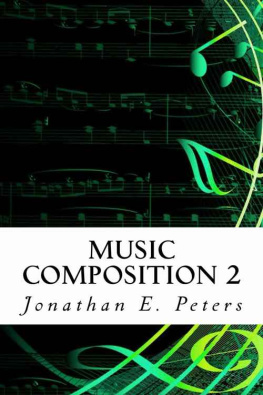

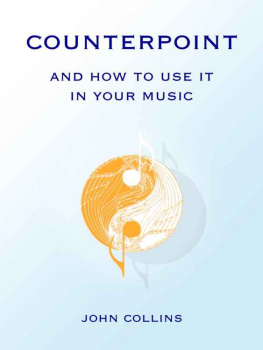
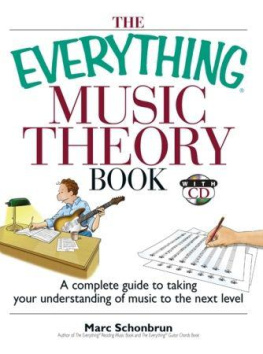

 The paper used in this publication meets the minimum requirements of American National Standard for Information SciencesPermanence of Paper for Printed Library Materials, ANSI/NISO Z39.48-1992.
The paper used in this publication meets the minimum requirements of American National Standard for Information SciencesPermanence of Paper for Printed Library Materials, ANSI/NISO Z39.48-1992.